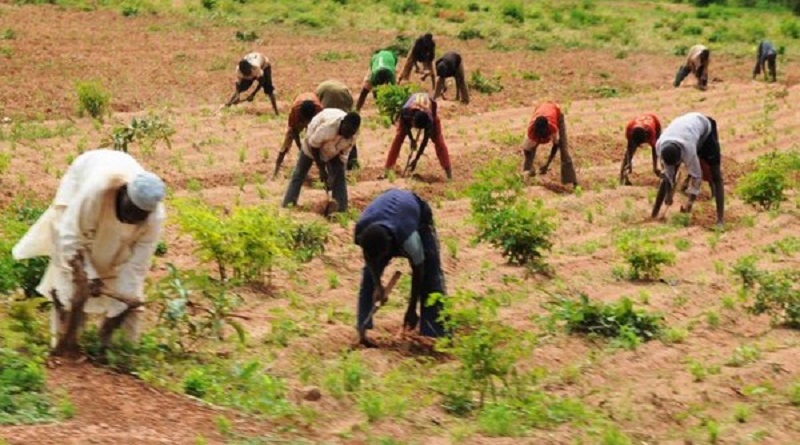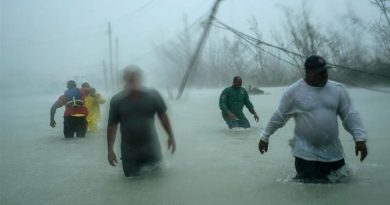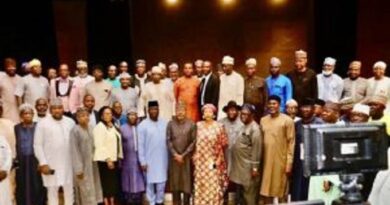Funding farmers to tackle climate change
It is no secret that the Paris Agreement, with its current ambition, won’t save us from considerable changes in our climate. UN Environment research in late 2017 showed that promised emission cuts are a third of what we need to avoid crossing the red line of a 2°C temperature rise this century.
It is also no secret that forests and agriculture over 30 per cent of the solution to this climate crisis. Yet the funds needed to transform agriculture and cut deforestation – the second-largest anthropogenic contributor to atmospheric carbon – make up only 3 per cent of all public climate finance.
This is why UN Environment, BNP Paribas, Rabobank and other partners in 2017 decided to change the game for agricultural finance and investment to companies and farmers.
Agriculture contributes massively to tropical forests disappearing at the rate of 26 football fields every minute, releasing stored carbon into the atmosphere. As the world grows to around 9 billion people by 2050, agriculture will need to produce 50 per cent more food. But this should not mean more trees felled.
There is no one-size-fits-all approach to this problem. Solutions need to use degraded land better (as opposed to clearing more forests), increase production on existing agricultural land and move towards integrated agroforestry systems – where crops, cattle and forest are mixed. Experience show that agroforestry benefits the climate, preserves biodiversity, and provides farmers with better livelihoods.
Take the case of Zaqueu Miguel. The Brazilian government gave him and several hundred other farmers plots of 1.7 hectares each outside Ribeirão Preto, in southeast Brazil, on the condition they reforest 20 per cent of the area and devote 15 per cent to agroforestry. While skeptical at first, the farmers became converts.
“In a forest, when a tree falls, it opens a clearing and an infinity of life forms follow … in agroforestry we make it happen more often,” he told The Guardian. “We have studies that show that this … is much better in terms of climate, soil and water.
“I used to need a whole bed for lettuce, another for cabbage … Today in the same space I plant five times more than I planted before.”
To get to this point, farmers need technical knowledge, and communities and businesses need incentives to restore degraded landscapes. This means money.
“If we want to see a change like we have in energy, from a fossil fuel-based economy to renewables, and get the private sector on board, we need to take away some of the costs and risks related to the transition to sustainable land use,” said Ivo Mulder, Finance and Private Sector Coordinator, Terrestrial Ecosystems Unit at UN Environment. “Concessional finance is virtually non-existent in land-use.”
UN Environment takes a proactive part in this transition by supporting and developing Sustainable Finance Facilities. One of the first is the Tropical Landscapes Financing Facility, a partnership between UN Environment, BNP Paribas, the World Agroforestry Centre and ADM Capital in Indonesia. It aims to bring long-term finance to projects and companies that stimulate green growth and improve rural livelihoods in Indonesia through a loan and grant fund, with BNP Paribas structuring the loans into bonds.
The first project comes online in early 2018, with a $95 million long-term loan facility to a company to further develop natural rubber plantations in Sumatra, Indonesia. Roughly half of 90,000-hectare concession will be set aside for conservation and community partnership programmes, including a 9,000-hectare wildlife conservation area, avoid the emissions of 24 million tonnes of CO2 equivalent and sequester another 15.4 million. It will benefit around 50,000 people – including 16,000 new jobs and improving the livelihoods of over 20,000 farmers.
“These initiatives can make a considerable difference to improving the environment, biodiversity or social development,” said Jean-Laurent Bonnafé, Chief Executive Officer of BNP Paribas. “This agreement [the facilities] marks a new way for governments, businesses and institutions to work together to co-develop solutions.”
Rabobank has also connected with UN Environment to create a one-billion-dollar facility to finance sustainable agriculture and stimulate forest protection. The facility will provide grants, de-risking instruments and credit to clients involved in sustainable agricultural production, processing or the trade of soft commodities – provided they follow strict provisions for forest protection, restoration and the involvement of smallholders.
One of the first focus countries is Brazil, where the coalition is looking to finance integrated crop, livestock and forestry farming practices on the 17 million hectares of arable land under the management of Brazilian farmers financed by Rabobank.
“It is clear that a different way of agricultural practices is needed that includes incentives and provisions to protect forest ecosystems and restore degraded lands,” said Rabobank CEO Wiebe Draijer.
Courtesy UNEP
It is no secret that the Paris Agreement, with its current ambition, won’t save us from considerable changes in our climate. UN Environment research in late 2017 showed that promised emission cuts are a third of what we need to avoid crossing the red line of a 2°C temperature rise this century.
It is also no secret that forests and agriculture over 30 per cent of the solution to this climate crisis. Yet the funds needed to transform agriculture and cut deforestation – the second-largest anthropogenic contributor to atmospheric carbon – make up only 3 per cent of all public climate finance.
This is why UN Environment, BNP Paribas, Rabobank and other partners in 2017 decided to change the game for agricultural finance and investment to companies and farmers.
Agriculture contributes massively to tropical forests disappearing at the rate of 26 football fields every minute, releasing stored carbon into the atmosphere. As the world grows to around 9 billion people by 2050, agriculture will need to produce 50 per cent more food. But this should not mean more trees felled.
There is no one-size-fits-all approach to this problem. Solutions need to use degraded land better (as opposed to clearing more forests), increase production on existing agricultural land and move towards integrated agroforestry systems – where crops, cattle and forest are mixed. Experience show that agroforestry benefits the climate, preserves biodiversity, and provides farmers with better livelihoods.
Take the case of Zaqueu Miguel. The Brazilian government gave him and several hundred other farmers plots of 1.7 hectares each outside Ribeirão Preto, in southeast Brazil, on the condition they reforest 20 per cent of the area and devote 15 per cent to agroforestry. While skeptical at first, the farmers became converts.
“In a forest, when a tree falls, it opens a clearing and an infinity of life forms follow … in agroforestry we make it happen more often,” he told The Guardian. “We have studies that show that this … is much better in terms of climate, soil and water.
“I used to need a whole bed for lettuce, another for cabbage … Today in the same space I plant five times more than I planted before.”
To get to this point, farmers need technical knowledge, and communities and businesses need incentives to restore degraded landscapes. This means money.
“If we want to see a change like we have in energy, from a fossil fuel-based economy to renewables, and get the private sector on board, we need to take away some of the costs and risks related to the transition to sustainable land use,” said Ivo Mulder, Finance and Private Sector Coordinator, Terrestrial Ecosystems Unit at UN Environment. “Concessional finance is virtually non-existent in land-use.”
UN Environment takes a proactive part in this transition by supporting and developing Sustainable Finance Facilities. One of the first is the Tropical Landscapes Financing Facility, a partnership between UN Environment, BNP Paribas, the World Agroforestry Centre and ADM Capital in Indonesia. It aims to bring long-term finance to projects and companies that stimulate green growth and improve rural livelihoods in Indonesia through a loan and grant fund, with BNP Paribas structuring the loans into bonds.
The first project comes online in early 2018, with a $95 million long-term loan facility to a company to further develop natural rubber plantations in Sumatra, Indonesia. Roughly half of 90,000-hectare concession will be set aside for conservation and community partnership programmes, including a 9,000-hectare wildlife conservation area, avoid the emissions of 24 million tonnes of CO2 equivalent and sequester another 15.4 million. It will benefit around 50,000 people – including 16,000 new jobs and improving the livelihoods of over 20,000 farmers.
“These initiatives can make a considerable difference to improving the environment, biodiversity or social development,” said Jean-Laurent Bonnafé, Chief Executive Officer of BNP Paribas. “This agreement [the facilities] marks a new way for governments, businesses and institutions to work together to co-develop solutions.”
Rabobank has also connected with UN Environment to create a one-billion-dollar facility to finance sustainable agriculture and stimulate forest protection. The facility will provide grants, de-risking instruments and credit to clients involved in sustainable agricultural production, processing or the trade of soft commodities – provided they follow strict provisions for forest protection, restoration and the involvement of smallholders.
One of the first focus countries is Brazil, where the coalition is looking to finance integrated crop, livestock and forestry farming practices on the 17 million hectares of arable land under the management of Brazilian farmers financed by Rabobank.
“It is clear that a different way of agricultural practices is needed that includes incentives and provisions to protect forest ecosystems and restore degraded lands,” said Rabobank CEO Wiebe Draijer.
Courtesy UNEP
It is no secret that the Paris Agreement, with its current ambition, won’t save us from considerable changes in our climate. UN Environment research in late 2017 showed that promised emission cuts are a third of what we need to avoid crossing the red line of a 2°C temperature rise this century.
It is also no secret that forests and agriculture over 30 per cent of the solution to this climate crisis. Yet the funds needed to transform agriculture and cut deforestation – the second-largest anthropogenic contributor to atmospheric carbon – make up only 3 per cent of all public climate finance.
This is why UN Environment, BNP Paribas, Rabobank and other partners in 2017 decided to change the game for agricultural finance and investment to companies and farmers.
Agriculture contributes massively to tropical forests disappearing at the rate of 26 football fields every minute, releasing stored carbon into the atmosphere. As the world grows to around 9 billion people by 2050, agriculture will need to produce 50 per cent more food. But this should not mean more trees felled.
There is no one-size-fits-all approach to this problem. Solutions need to use degraded land better (as opposed to clearing more forests), increase production on existing agricultural land and move towards integrated agroforestry systems – where crops, cattle and forest are mixed. Experience show that agroforestry benefits the climate, preserves biodiversity, and provides farmers with better livelihoods.
Take the case of Zaqueu Miguel. The Brazilian government gave him and several hundred other farmers plots of 1.7 hectares each outside Ribeirão Preto, in southeast Brazil, on the condition they reforest 20 per cent of the area and devote 15 per cent to agroforestry. While skeptical at first, the farmers became converts.
“In a forest, when a tree falls, it opens a clearing and an infinity of life forms follow … in agroforestry we make it happen more often,” he told The Guardian. “We have studies that show that this … is much better in terms of climate, soil and water.
“I used to need a whole bed for lettuce, another for cabbage … Today in the same space I plant five times more than I planted before.”
To get to this point, farmers need technical knowledge, and communities and businesses need incentives to restore degraded landscapes. This means money.
“If we want to see a change like we have in energy, from a fossil fuel-based economy to renewables, and get the private sector on board, we need to take away some of the costs and risks related to the transition to sustainable land use,” said Ivo Mulder, Finance and Private Sector Coordinator, Terrestrial Ecosystems Unit at UN Environment. “Concessional finance is virtually non-existent in land-use.”
UN Environment takes a proactive part in this transition by supporting and developing Sustainable Finance Facilities. One of the first is the Tropical Landscapes Financing Facility, a partnership between UN Environment, BNP Paribas, the World Agroforestry Centre and ADM Capital in Indonesia. It aims to bring long-term finance to projects and companies that stimulate green growth and improve rural livelihoods in Indonesia through a loan and grant fund, with BNP Paribas structuring the loans into bonds.
The first project comes online in early 2018, with a $95 million long-term loan facility to a company to further develop natural rubber plantations in Sumatra, Indonesia. Roughly half of 90,000-hectare concession will be set aside for conservation and community partnership programmes, including a 9,000-hectare wildlife conservation area, avoid the emissions of 24 million tonnes of CO2 equivalent and sequester another 15.4 million. It will benefit around 50,000 people – including 16,000 new jobs and improving the livelihoods of over 20,000 farmers.
“These initiatives can make a considerable difference to improving the environment, biodiversity or social development,” said Jean-Laurent Bonnafé, Chief Executive Officer of BNP Paribas. “This agreement [the facilities] marks a new way for governments, businesses and institutions to work together to co-develop solutions.”
Rabobank has also connected with UN Environment to create a one-billion-dollar facility to finance sustainable agriculture and stimulate forest protection. The facility will provide grants, de-risking instruments and credit to clients involved in sustainable agricultural production, processing or the trade of soft commodities – provided they follow strict provisions for forest protection, restoration and the involvement of smallholders.
One of the first focus countries is Brazil, where the coalition is looking to finance integrated crop, livestock and forestry farming practices on the 17 million hectares of arable land under the management of Brazilian farmers financed by Rabobank.
“It is clear that a different way of agricultural practices is needed that includes incentives and provisions to protect forest ecosystems and restore degraded lands,” said Rabobank CEO Wiebe Draijer.
Courtesy UNEP




